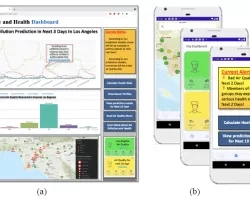The purpose of this effort is to develop a deterministic model for predicting and simulating pollen emission and downwind concentration to study details of phenology and meteorology and their dependencies. We aim to develop a real time and rapid response pollen release and transport system, based on meteorological models, satellite-based remote sensing, and an in-situ network of phenology cameras. For rapid response MODIS data, we plan to prototype our pollen detection from MODIS Direct Broadcast to acquire daily data in real time (1 hour lag time), which would be similar to the MODIS Rapid Response System for Fire detection. As MODIS winds down, the NPOESS-VIIRS sensor will assume daily vegetation monitoring tasks. Advancements in geostationary satellites will allow 1km Vegetation Indices at 15-30 minute intervals. This information will be used to support the Centers for Disease Control and Prevention (CDC)'s National Environmental Public Health Tracking Program, SYRIS (Syndrome Reporting Information System) and the State of New Mexico environmental public health decision support for asthma and allergies alerts. Previous successful studies under the NASA-supported (Public Health Applications in Remote Sensing) PHAiRS project lead us to this point. We are confident that use of NASA and NOAA satellite data, our tested dust model which is being prototyped for pollen grains, and the PHAiRS potential to improve long-term public health and environmental services will yield groundbreaking results in the study we intend to propose. This team will work closely with CDC, EPA and state agencies in a rigorous model validation and verification program. This research directly supports the Applied Sciences Program objectives identified in ROSES 2008 A.18 section 1.2 by enabling the use of results from NASA Earth science research to public health organizations for enhancement of their operational asthma surveillance decision support systems (DSS) to serve their management, business, and policy responsibilities.
Project


